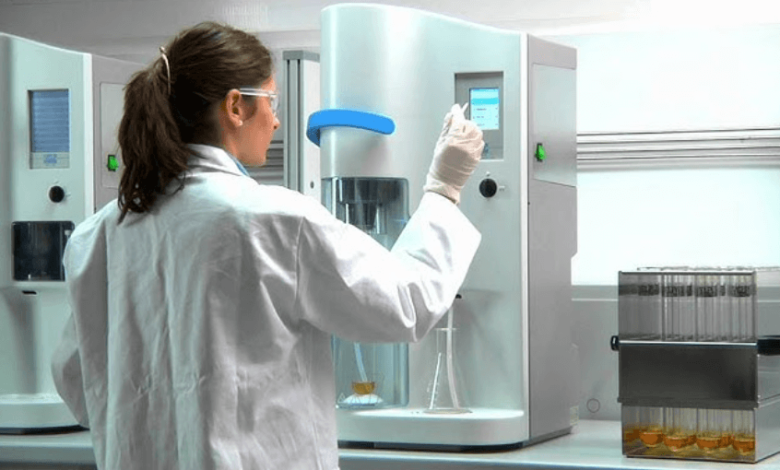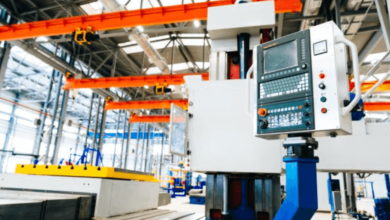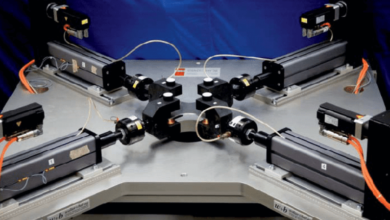Understanding the Kjeldahl Protein Analyzer: A Game-Changer in Modern Protein Analysis

In today’s global economy, industries ranging from food production to agriculture rely heavily on precise protein measurement. The need for reliable, repeatable, and standardized protein analysis has led to the evolution of analytical tools. Among the most trusted and widely used technologies is the kjeldahl protein analyzer, an automated system that simplifies and enhances the classic Kjeldahl method for determining protein content.
This article delves into the working principles, benefits, applications, and selection tips for a kjeldahl protein analyzer, showcasing its vital role in achieving quality assurance and regulatory compliance in laboratories worldwide.
What Is a Kjeldahl Protein Analyzer?
The kjeldahl protein analyzer is a laboratory instrument that automates the traditional Kjeldahl method, which is a chemical process developed in 1883 by Johan Kjeldahl for determining nitrogen content in organic substances. Since proteins contain nitrogen, the method became a benchmark for protein quantification in many types of samples.
A kjeldahl protein analyzer streamlines the steps of:
- Digestion (converting organic nitrogen into ammonium)
- Distillation (separating ammonia from the digest)
- Titration (measuring ammonia to calculate nitrogen and thus protein)
With automation, this device minimizes human error, speeds up analysis, enhances lab safety, and ensures consistent results.
See also: Customer Assistance Hotline: 4694451146
The Science Behind Protein Analysis
Protein content in substances like food, fertilizer, or feed is usually determined by calculating the nitrogen content. The assumption is that most nitrogen in these materials comes from protein. The basic conversion used is:
% Protein = % Nitrogen × Conversion Factor
The conversion factor varies depending on the sample type. For instance:
- For milk: 6.38
- For general food protein: 6.25
- For wheat: 5.7
The kjeldahl protein analyzer uses this principle but adds automation to each step, giving laboratories quick and accurate readings while following standardized protocols.
Key Components of a Kjeldahl Protein Analyzer
A typical kjeldahl protein analyzer includes several integrated modules:
🔬 1. Digestion Unit
This part heats the sample with sulfuric acid and catalysts in a block or tube system. It breaks down organic matter and converts nitrogen into ammonium sulfate.
💧 2. Distillation Module
After digestion, sodium hydroxide is added to convert ammonium into ammonia gas. The analyzer automatically distills this ammonia into a boric acid solution.
⚖ 3. Titration System
The trapped ammonia is titrated with a standard acid (usually hydrochloric or sulfuric acid). The analyzer calculates the nitrogen and protein percentage based on the titration volume.
🖥 4. Interface & Software
Most modern systems include a touchscreen interface and software for controlling analysis, recording data, generating reports, and integrating with LIMS (Laboratory Information Management Systems).
Why Choose a Kjeldahl Protein Analyzer?
There are several compelling reasons why laboratories across the globe are investing in a kjeldahl protein analyzer:
✅ Accurate and Reliable Results
By automating chemical handling and measurement, the analyzer reduces variability and ensures repeatable outcomes. This consistency is essential for laboratories needing ISO or AOAC-certified results.
✅ High Throughput
Many analyzers can process multiple samples at once—perfect for food processing plants or agricultural labs handling hundreds of tests daily.
✅ Improved Safety
Automation keeps operators away from corrosive acids and harmful vapors. Fume hoods, overheat protection, and sealed systems improve lab safety significantly.
✅ Time and Labor Savings
Manual protein analysis is time-consuming. Automated systems free up lab personnel to perform other tasks while the analyzer runs tests in the background.
✅ Data Traceability
Digital logging and automated report generation make audits and regulatory submissions more straightforward and secure.
Industry Applications
The kjeldahl protein analyzer plays an important role in several industries:
🧀 Food and Beverage
Protein labeling is mandatory on packaged food products in most countries. Manufacturers use the analyzer to ensure compliance and maintain nutritional consistency. Commonly tested items include dairy, meat, flour, cereal, and baby food.
🌱 Agriculture and Fertilizer
Farmers and fertilizer manufacturers analyze nitrogen content to evaluate soil fertility and optimize fertilizer application rates.
🐄 Animal Feed
Livestock nutritionists rely on protein content to formulate balanced diets. Analyzers help test raw materials and final feed products for quality control.
💊 Pharmaceuticals
Nitrogen testing in medicinal ingredients and finished drugs helps determine purity and consistency, especially for nitrogen-containing compounds.
🌎 Environmental Testing
Water and soil labs use the analyzer to monitor nitrogen pollution and comply with environmental regulations.
Choosing the Right Kjeldahl Protein Analyzer
When purchasing a kjeldahl protein analyzer, consider the following factors to ensure you choose a system that fits your lab’s needs:
⚙ Level of Automation
- Fully automatic analyzers handle digestion, distillation, and titration.
- Semi-automatic models may require manual digestion or titration.
🔢 Sample Throughput
For labs with heavy workloads, choose a system that supports batch processing or has multiple digestion tubes.
📊 Data Capabilities
Ensure the instrument provides robust software for data collection, result calculations, and export options in compatible formats.
🌐 Regulatory Compliance
Check that the system adheres to AOAC, ISO, or other industry standards relevant to your field.
🔧 Service and Support
Choose suppliers that offer installation support, operator training, calibration services, and easy access to spare parts.
Maintenance Tips
To get optimal performance and longevity from your kjeldahl protein analyzer, follow these best practices:
- Use fresh and high-purity chemicals to avoid contamination or measurement errors.
- Regularly calibrate the titration system using certified reference materials.
- Clean digestion and distillation tubes after each run to prevent clogging or cross-contamination.
- Inspect seals and gaskets to ensure airtight performance.
- Schedule preventive maintenance with the manufacturer to keep your system operating at peak efficiency.
Top Brands and Manufacturers
Some trusted names in the kjeldahl protein analyzer market include:
- VELP Scientifica – Italian-made, known for compact and energy-efficient designs.
- BUCHI Labortechnik – Swiss precision instruments offering modular systems and high performance.
- FOSS Analytical – High-capacity analyzers suitable for food and feed processing.
- Labconco – Reliable U.S.-based manufacturer known for laboratory safety.
- Drawell – An emerging Chinese manufacturer offering cost-effective and dependable analyzers.
Final Thoughts
The kjeldahl protein analyzer represents a critical leap in laboratory automation, offering unmatched precision and productivity in protein testing. For any lab involved in food safety, agriculture, pharmaceuticals, or environmental monitoring, this analyzer simplifies workflows and elevates quality assurance.
By reducing analysis time, minimizing human error, and ensuring data traceability, the analyzer supports laboratories in meeting modern regulatory demands while improving operational efficiency.
As consumer demand for transparency and product quality continues to grow, investing in a reliable kjeldahl protein analyzer is not just a smart decision—it’s a strategic one.





